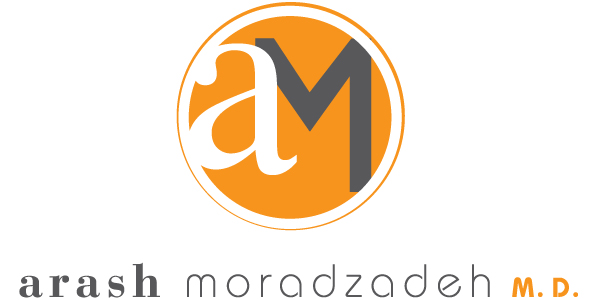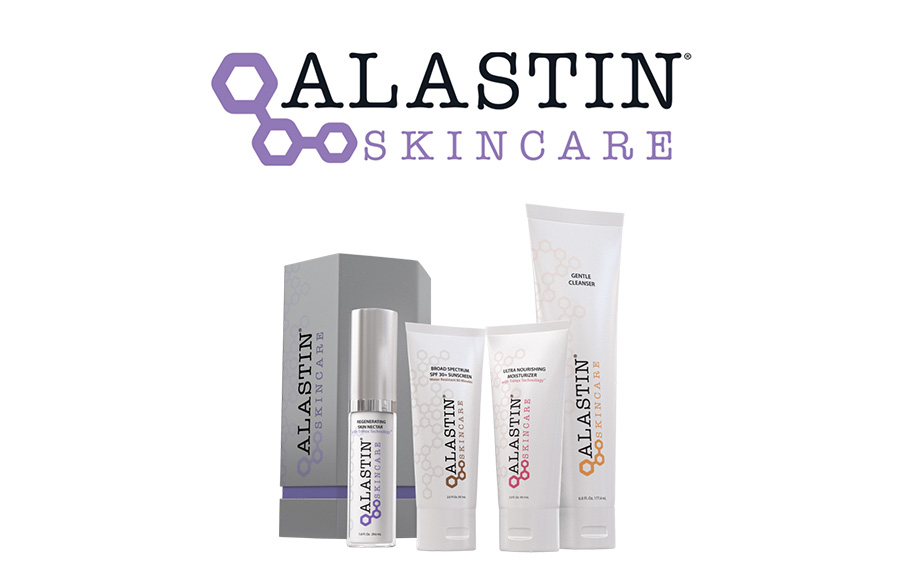Often overshadowed by its cosmetically focused counterpart, the functional rhinoplasty goes well beyond aesthetics. This surgical procedure is primarily intended to improve breathing and nasal function for patients across a wide spectrum of nasal birth defects, injuries, disorders, and more.
At AM Facial Plastics of Beverly Hills, CA, we employ a range of proven surgical methodologies to accommodate as many patients with nasal conditions as possible. Each patient is approached with an individualized treatment plan, wherein we take into account your unique anatomy, symptoms, goals and expectations of treatment, and more. The end result is a major improvement in nasal function, which in turn benefits overall respiratory health.
What Is Functional Rhinoplasty?
The term “rhinoplasty” refers to a plastic surgery procedure that involves altering the internal and external structures of the nose. While it is commonly done for cosmetic reasons to enhance the aesthetic appearance of the nose, it can also serve functional purposes by improving nasal breathing. In such cases, the procedure is known as “functional rhinoplasty.” This type of nasal surgery often includes repairing the nasal valves, which are the internal passages of the nostrils. These valves may be naturally narrow, collapsed, or damaged due to previous surgeries. Whatever the reason for the procedure, functional rhinoplasty can drastically improve your comfort, health, and overall quality of life by facilitating healthier breathing.
What Conditions Does Functional Rhinoplasty Treat?
There are a wide range of conditions and injuries that can permanently affect your ability to breathe properly if left untreated, many of which are effectively treated by functional rhinoplasty. These include nasal polyps, congenital deformities of the nose, traumatic injuries to the nose (sports accidents, vehicle accidents, a fall or collision, etc.), deviated septum, collapsed nostrils, enlarged turbinates, and more.
In addition to simply making it more difficult to take in an adequate amount of air with each breath, these deformities can also compromise the ability of your nose to warm and filter incoming air. They can also cause snoring, frequent runny noses, and other irritating issues. Thankfully, functional rhinoplasty can remedy these problems for a variety of patients—read on to learn how.
What Are the Benefits of Functional Rhinoplasty?
- Relief from Obstructed Nasal Breathing: Functional rhinoplasty can improve airflow through the nasal passages, providing relief for those suffering from chronic nasal blockages. This treatment is designed to open up the nasal pathways and facilitate easier breathing.
- Correction of Nasal Injury: Nose reshaping is often essential after an injury to restore the nose’s structure and function. Not only does it correct the physical appearance, but it also ensures the nasal pathways are clear and functioning correctly.
- Rectification of Nasal Birth Defects: Undergoing nasal surgery with a rhinoplasty specialist can correct defects present from birth, improving both aesthetic aspects and nasal functionality. This procedure aims to address any internal and external nasal issues stemming from congenital conditions.
- Repair of Acquired Deformities: Rhinoplasty is beneficial for repairing issues acquired through life, whether from accidents, disease, or previous surgeries. It restores the nose’s structure, leading to improved appearance and function.
- Resolution of Nasal Valve Issues: Functional rhinoplasty is specifically designed to address problems in the nasal valve area, which can impact breathing. By correcting these issues, patients can experience a marked improvement in their breathing and overall nasal function.
What to Expect From Rhinoplasty Surgery and Recovery
Functional rhinoplasty can be performed using a variety of anesthesia methods, which can be tailored according to the preferences of both the patient and the surgeon. These methods include local anesthesia, intravenous sedation (often referred to as “twilight anesthesia”), and general anesthesia. To reach the bone and cartilage beneath, incisions are made strategically. The technique is called a closed rhinoplasty when these cuts are entirely concealed within the nostrils. If a minor incision is required at the nose’s base to enhance visibility, this approach is classified as an open rhinoplasty.
Based on the unique needs of the patient, additional cartilage and bone grafts may be necessary to provide better support during nose reshaping procedures. Typically, these grafts are harvested from the nasal septum during septoplasty; however, there are instances when cartilage from the ear or rib may also be used. Additional nose reshaping or grafting procedures may involve suturing the cartilage. Osteotomies, which involve intentionally breaking and realigning the nasal bones, are often performed to correct and straighten the nose structure.
After the procedure, the external part of the nose is usually taped, and sometimes an external cast is applied. Dr. Moradzadeh typically avoids using packing for enhanced comfort. The patient will have internal and external splints in place for approximately a week post-surgery, which will then be removed by the surgeon. Bruising and swelling can be expected in the initial weeks following the procedure, and patients should plan on taking a minimum of seven days off from work or school.
Functional Vs Cosmetic Rhinoplasty: Key Similarities and Differences
As mentioned, the most fundamental difference between the functional and cosmetic rhinoplasty is that the former is focused on enhancing nasal breathing, while the latter is focused on improving the appearance of the nose. As such, the functional rhinoplasty is more typically concerned with making subtle changes to the internal structures of the nose, while the cosmetic rhinoplasty focuses more broadly on the overall shape and size of the nose. This doesn’t mean that there is never any overlap in terms of the techniques that surgeons use or the results that each procedure provides.
For example, both of these procedures often make use of osteotomy (cutting and/or removal of bone) and cartilage grafts. In the case of a functional rhinoplasty, osteotomy can be used to realign a crooked nose for improved nasal breathing. It can also be used to remove a nasal hump, narrow the bridge of the nose, and correct other deformities.
Similarly, grafting cartilage from other parts of the body enables us to better address a crooked or humped nose. In the more functional application, cartilage grafting can be used to straighten a deviated septum, reopen collapsed nostrils, and increase nasal bridge size.
In some cases, not only the techniques overlap, but patient motivations as well. While it is not the primary focus of a functional rhinoplasty, aesthetic improvements can still be prioritized to an extent so that both the form and function of the nose are improved.
Can Surgeons Combine Functional and Cosmetic Rhinoplasty Procedures?
Often referred to as a “dual functional and cosmetic rhinoplasty,” it is possible to combine both of these procedures for patients looking to enhance both the aesthetics of their nose and its proper functioning. It’s important to understand that the patient’s unique anatomy, breathing concerns, preferences, surrounding facial geometry, and more can all affect how this combined procedure is approached by the surgeon. Hence, every dual functional and cosmetic rhinoplasty is unique.
While the consultation and planning process is typically a bit more involved for patients aiming to combine these procedures, the payoff is a time-saving, cost-effective solution to two issues that requires only one recovery period.
Functional Rhinoplasty Recovery and Aftercare
Recovery is different for everyone, and as mentioned, no two rhinoplasty procedures are exactly the same. To provide a general framework for the timeline you can expect, most patients will experience acute after-effects of the surgery for a period of one to two weeks. For example, you will likely notice mild to moderate swelling, bruising, and discomfort immediately after the procedure that continually improves throughout this initial two-week phase and beyond.
As you navigate through weeks two through four of your recovery, the swelling should be reduced enough for the contours of your nose to reappear. If you had any congestion following the procedure, this may also be significantly improved (if not already) during this window. From month two of your recovery and on, you should be on the “downhill” in terms of any congestion issues, swelling, and the appearance of your nose. To reiterate, this is the “typical” recovery progression, but your experience may differ.
As for aftercare, our team at AM Facial Plastics will provide you with a set of personalized instructions following your procedure to ensure you have a safe and effective recovery. Always defer to your provider’s guidelines. These typically include keeping your head elevated when resting, avoiding heavy activities (lifting weights, cycling, etc.) for at least two weeks, using cold compresses as indicated, and more.
Frequently Asked Questions About Functional Rhinoplasty
Who Is a Good Candidate for Functional Rhinoplasty?
Most surgeons agree that women should wait until age 16 and men until age 16-18 before undergoing functional rhinoplasty surgery to avoid disturbing the normal growth of the nose until maturity. While there is no age cut-off per se, as individuals grow older, their noses tend to change, and potential medical conditions may make surgery too risky.
How Long Does It Take for Full Rhinoplasty Results to Appear?
After undergoing nasal surgery, initial swelling subsides within a few weeks, but it can take up to a year for the full results to become visible. This timeline varies among individuals as the nose settles into its new shape and fully heals.
How Should I Prepare for Functional Rhinoplasty?
Preparing for functional rhinoplasty involves several steps: scheduling a consultation to discuss your goals, avoiding medications that can increase bleeding, and quitting smoking to enhance healing. Your surgeon will provide a detailed list of instructions based on your specific needs.
Can Functional Rhinoplasty Improve My Sense of Smell?
Rhinoplasty can improve your sense of smell if nasal blockages are corrected. However, the primary aim is to address structural issues; any improvement in olfactory function is considered an additional benefit.
What Impact Will Improving My Breathing Have On Other Health Concerns?
Depending on the issue(s) you seek to have treated by functional rhinoplasty, improving nasal breathing can prevent respiratory infections and decrease the frequency and severity of allergy symptoms. This procedure can also lower blood pressure, enhance sleep quality, and boost your body’s oxygen uptake, which comes with several benefits of its own.
How Do I Choose the Right Surgeon for My Rhinoplasty?
When choosing a surgeon for rhinoplasty surgery, consider their qualifications, experience, and specialization in nose jobs. Look for board certification, review before-and-after photos of previous patients, and read reviews to ensure they have a proven track record of delivering satisfactory results.
Is Functional Rhinoplasty Covered By Insurance?
Typically, insurance does not extend coverage to cosmetic procedures. Nonetheless, nose surgery aimed at enhancing breathing function, rectifying significant deformities, or repairing injuries often receives partial or full coverage. Make sure to consult with your insurance provider to understand the extent of coverage for functional nose surgery under your policy.
Functional Rhinoplasty: A Path to Better Breathing and Health
Functional rhinoplasty goes beyond cosmetic enhancements, addressing breathing issues and structural irregularities with a focus on improving overall nasal function. At AM Facial Plastics in Beverly Hills, CA, our rhinoplasty specialist is equipped with the expertise and experience to guide you through this process. For more details or to schedule a consultation, reach out to us via our online form or call us at (310) 659-9900.


